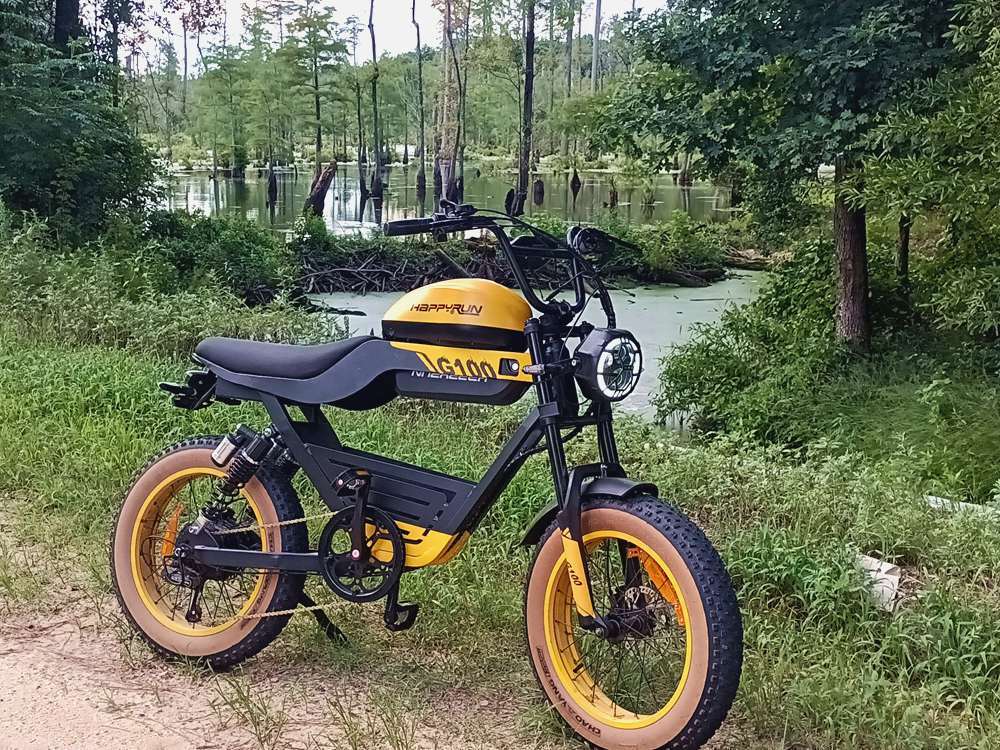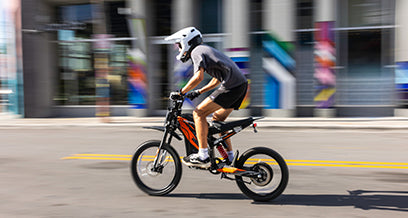
How to Charge an Electric Bike Battery at Home
Electric bikes (e-bikes) have transformed how we commute, providing a quick, sustainable, and pleasurable way to go around. A fully charged battery is essential to the continued functionality of any e-bike, be it for daily commuting, weekend excursions, or everyday chores. Even though it's easy to charge an electric bike battery, doing it right may increase the battery's lifespan and guarantee that your bike will always be prepared for the next journey. In this article, we'll walk you through the process of charging your electric bike at home and offer suggestions for extending battery life.
Understanding Your Electric Bike Battery
It's critical to comprehend the kind of battery your e-bike utilizes before beginning the charging procedure. Most current e-bikes use lithium-ion batteries, which are known for their high efficiency, lightweight design, and extended lifespan. These batteries usually require little care, but appropriate charging is essential to their longevity.
As each e-bike is unique, you must refer to your e-bike's manual for specific charging instructions. However, most models follow the same fundamental billing principles.
Steps for Charging Your Electric Bike at Home
Choose the Right Environment
Choosing the ideal setting is the first step in charging the battery on your e-bike. It's preferable to charge your battery inside, away from high temperatures and dampness. A dry, cool area, such as a garage or an exclusive charging station within your house, is excellent. As high heat might shorten the battery's life, avoid charging your battery in the sun or next to heating sources.
Use the Original Charger
Use an e-bike charger that is particularly made for your model or the one that comes with it at all times. Chargers are designed to correspond to the battery's requirements, guaranteeing a safe and effective charge. An incompatible charger may cause the battery to be overcharged, undercharged, or even damaged.
Connect the Charger Carefully
It's usually more convenient to remove the battery from your e-bike to charge it. This enables you to take the battery inside and charge it in a regulated setting. If the battery is built into the bike's frame, ensure that it is stable and in a safe area before attaching the charger.
Step-by-step charging:
- Connect the charger to a power outlet first.
- Make sure the connections on the charger and battery are correctly aligned.
- After connecting, make sure the charger's charging light is on to show that the charging process has begun.
Monitor the Charging Process
Most e-bike chargers come with an indicator light that showcases the charge state. A red or flashing light shows that the battery is charging, but a green light indicates that it is completely charged. Charging periods vary based on battery capacity, however, a full charge typically takes between 4 and 6 hours. It is advisable to keep an eye on the charging process, particularly during the initial few times, to make sure everything is operating as it should.
Avoid Overcharging
Overcharging can harm the battery and substantially reduce its lifespan. While many current chargers automatically turn off after the battery is fully charged, it's always a good idea to disconnect the charger once the charge is done. This stops the battery from going through a cycle of draining and recharging, which might reduce its performance as time passes.
Constantly Charge Your Battery
Even if you don't use your e-bike on a daily basis, one should always ensure the battery remains charged. Lithium-ion batteries work best when they are between 30% and 80% charged. Avoid totally draining the battery, since this might affect its capacity and longevity. However, keeping a fully charged battery for an extended period of time might be hazardous. If you plan on storing the battery for a lengthy period of time, charge it to about 50% capacity.
Safety precautions
Charging an e-bike battery is typically safe, but you should take some simple steps to avoid errors.
- Avoid Water Exposure: Do not charge the battery near water or in wet environments, as this might result in short circuits.
- Verify Ventilation: To avoid overheating, charging ought to be done in a space with enough ventilation.
- Check for Damage: Continually look for indications of damage, including distressed wires or loose connections, on the charger and battery. If you observe anything strange, cease using the charger and battery until they have been inspected or replaced.

Maximizing Battery Life
Appropriate charging is simply one component of maintaining your e-bike's battery. Here are a few more ideas to help you get the most out of your battery.
- Steer Clear of Excessive Temperatures: Batteries can be adversely affected by both excessive heat and cold. Keep your battery's temperature between 10°C and 25°C (50°F to 77°F).
- Store Properly: Charge your e-bike's battery to around 80% and keep it in a dry, cool area if you need to store it or its battery for a long time. This helps keep the battery healthy during periods of idleness.
- Regular Maintenance: Make sure all connections are tight and clean the battery contacts on a regular basis. If your battery exhibits indications of deterioration, such as decreased range or longer charging times, it may be time for a professional inspection.
If you want to learn more about maintaining your e-bike, particularly when it comes to storage, read our guide Can Electric Bikes Be Stored Outside? This article offers essential insights into the hazards and best methods for keeping your e-bike, whether you have plenty of interior room or have to store it outside.
Conclusion
Charging your electric bike at home is an effortless process, but it must be done carefully to preserve the battery's durability and performance. Following the methods given in this guide—choosing the ideal environment, using a suitable charger, and avoiding overcharging—will keep your e-bike in great shape and ready for any journey. Recall that maintaining your battery properly and giving it regular maintenance will let you get the most out of your e-bike for many years to come.
FAQs
How can you effectively charge your electric bike battery at home?
To effectively charge your electric bike battery at home, plug the charger into a standard outlet and connect it to the bike's battery. Ensure the area is dry and well-ventilated. Monitor the charging process until the indicator shows that the battery is fully charged, typically indicated by a green light.
What essential equipment do you need for charging an electric bike?
Essential equipment for charging an electric bike includes the manufacturer-provided charger, a compatible power outlet, and a stable surface for the battery. If necessary, an adapter may be required to match the charging port type. Always use the original charger designed for your specific bike model.
Which steps should you follow to ensure safe charging?
To ensure safe charging, follow these steps: 1) Connect the charger to a power outlet first; 2) Plug the charger into the battery; 3) Charge in a cool, dry area; 4) Monitor the charging status; and 5) Unplug the charger once fully charged to avoid overcharging.
Are there specific precautions to take when charging your electric bike battery?
Yes, specific precautions include charging in a well-ventilated area away from flammable materials, avoiding extreme temperatures, and not leaving the charger plugged in indefinitely. Always use the original charger to prevent damage and ensure compatibility with your battery.
Why is it important to use the original charger for your electric bike?
Using the original charger is crucial because it matches the battery's voltage and charging requirements, ensuring safe and efficient charging. Generic chargers may not provide adequate power or could potentially damage the battery, leading to reduced performance or safety hazards.
































Leave a comment